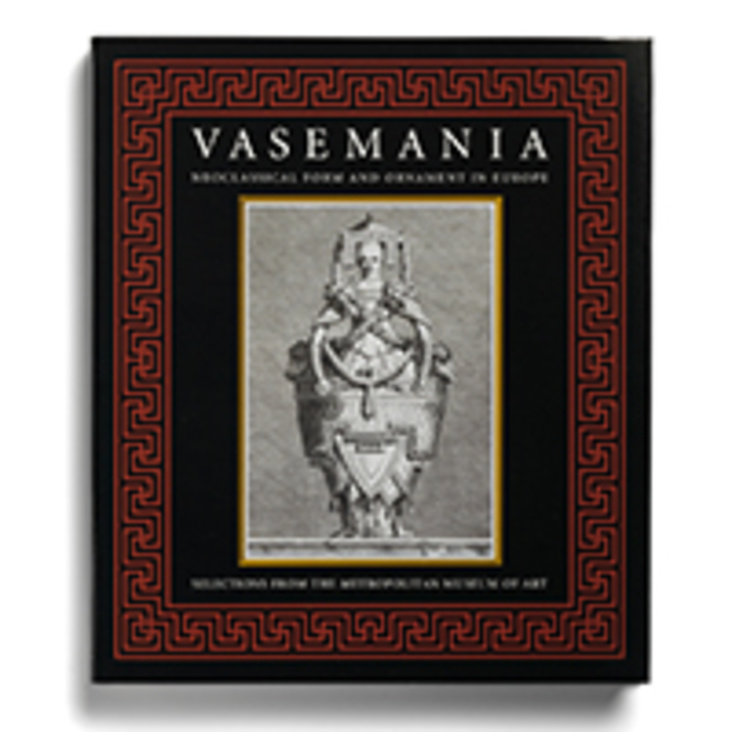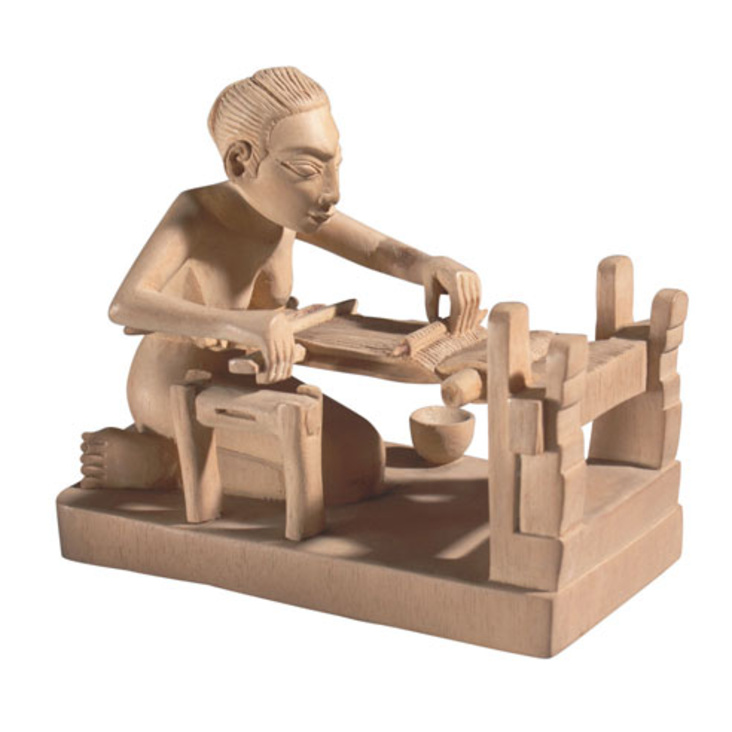The Bard Graduate Center presented the first major exhibition on the life of William Beckford (1760–1844), the preeminent connoisseur of the late 18th and 19th centuries and one of the most influential collectors of the past 200 years of European and Asian art. The exhibition was on view at the BGC from October 2001 to early January 2002, after which it traveled to the prestigious Dulwich Picture Gallery, London.
William Beckford, 1760–1844: An Eye for the Magnificent brought together 175 extraordinary works of art spanning three centuries: paintings, drawings, engravings, lithographs, European and Chinese silver and porcelain, Japanese lacquer and English, French and Italian furniture. These works were drawn from private collections and from prestigious American and British institutions such as the British Museum, the National Gallery of Art, London, the Ashmolean Museum, the National Trust of Scotland, and The Metropolitan Museum of Art.
Single-minded in his pursuit of the finest works, Beckford often diverged from the more conventional taste of his peers such as the Prince of Wales (later King George IV), who collected largely contemporaneous material, or Thomas Hope, who was inspired by the ancient world. Beckford’s interests were far broader, though his taste was equally discerning. His love of ancient, medieval and Renaissance art was matched by his appreciation for Islamic and Asian works, the Baroque period, and 18th- and early 19th-century objects and books. His unbiased interest in the arts of many cultures and periods influenced generations of renowned private collectors, including the Marquis of Hertford (Wallace Collection), the Rothschilds, and the Americans J. P. Morgan and Henry and Louisine Havemeyer.
The exhibition also explored aspects of William Beckford’s flamboyant personality and unconventional life, providing an overview of his family, his education and other circumstances that shaped him. Beckford was a child of privilege, son of a Lord Mayor of London and related to the Hamiltons, the greatest ducal family of Scotland. The vast riches he inherited from his father’s Jamaican sugar plantations earned him the sobriquet “England’s wealthiest son.” As a child he developed an encompassing love of the arts and by his mid-20s had traveled widely and studied painting, music, literature and architecture to a greater extent than most children of wealth. The precocious Beckford also made his mark as a novelist, composer of music, and impresario of design. His unique role as patron and artist made the young Beckford a figure of international repute.
As a young collector Beckford heeded the tastes of his generation in his acquisition of neoclassical paintings and objects and in his preference for certain architectural styles. His growing fascination with Romanticism, however, inspired a marked shift in his taste. Soon after his return to England in the 1790s, following nearly a decade of travel in Western Europe, he settled at his father’s country mansion, Fonthill Splendens in Wiltshire, where he began his most ambitious project, the construction of Fonthill Abbey.
The noted architect James Wyatt designed this monumental Gothic Revival residence, reminiscent of a great cathedral complex. Its quixotic construction and furnishing consumed nearly 25 years of Beckford’s life and vast amounts of his fortune, branding him as a recluse and eccentric. The secrecy surrounding the grandiose structure and its extensive parklands, which were enclosed by a wall eight miles long and landscaped according to Beckford’s designs, gave it a cachet unmatched by any other building project of the era. Its looming profile, integration into the Salisbury landscape, and reputation as a repository of unparalleled works of art influenced a generation of architects and designers, while its romantic associations with England’s medieval past and the reputation of its owner captured the public imagination.
Beckford finally opened Fonthill Abbey to the public in 1822 and again in 1823, offering to sell its contents in an effort to rebuild his diminished fortune. Though the 1822 sale was ultimately canceled, the 1823 sale was the most talked about of its day. During the weeks in which the house was open for viewing a curious population flocked there and was astounded by the breadth and quality of Beckford’s collections and by the knowledge, ambition, and wealth that he had brought to the creation and furnishing of Fonthill Abbey. The extraordinary residence revealed Beckford as a leading advocate of Gothic architecture, design and history and an ardent collector of Oriental, Islamic and Renaissance art.
Beckford departed Fonthill Abbey in 1822 and relocated to Bath, where he continued his passion for architecture and collecting. By then one of England’s most active and recognized connoisseurs, Beckford remained a habitué of important auctions of the day and a collector of the rare and exotic until his death in 1844. Many of his finest acquisitions found their way into such esteemed collections as the Queen’s Collection, England; National Gallery of Art, London; National Gallery of Art, Washington, D.C.; museums in Cleveland, Toledo and Boston; and houses belonging to the National Trust of England and Scotland.
To his daughter, the Duchess of Hamilton, Beckford bequeathed a collection that remains legendary for its superior beauty, craftsmanship, and eclecticism. Today many of these objects reside in Scottish collections such as the National Museum of Scotland; Burrell Collection, Glasgow; and Brodick Castle, the Hamiltons’ former residence and now a National Trust property.
The exhibition was accompanied by an illustrated catalogue, William Beckford, 1760-1844: An Eye for the Magnificent, copublished by the Bard Graduate Center and Yale University Press. The catalogue comprises 16 essays on Beckford’s life and collections and approximately 200 illustrations, the majority new photographs commissioned by the BGC of the exotic sites Beckford visited and the residences he occupied.










.jpg,732x732,c)




















